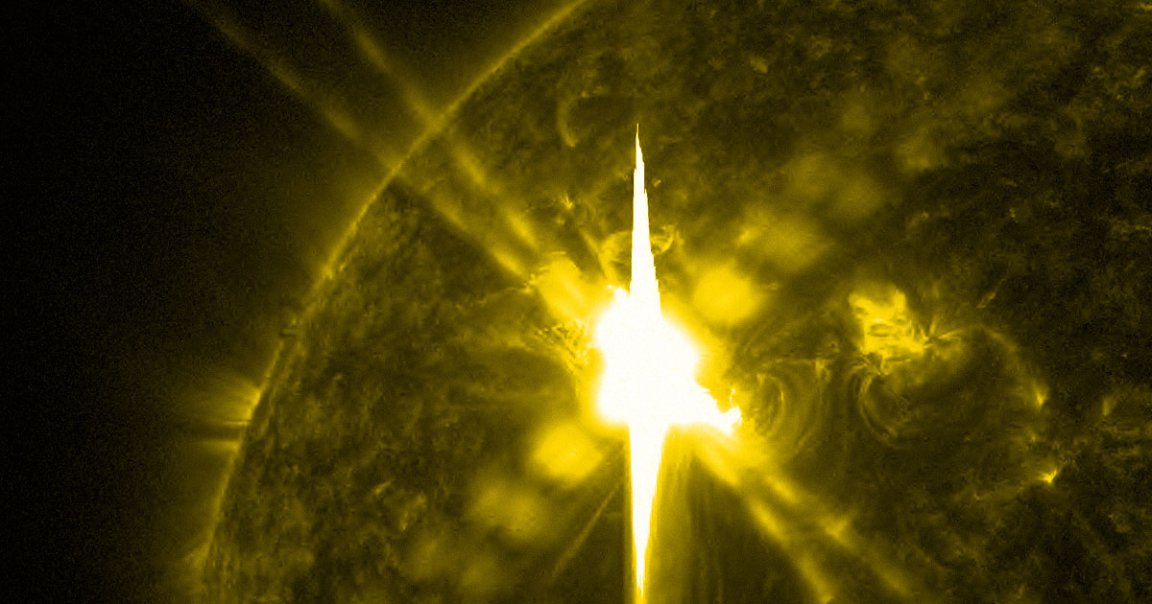
Seeing Patterns
A team of researchers has made an unusual discovery: a series of “heartbeat”-like radio bursts emanating from a solar flare thousands of miles above the Sun’s surface — and they’re still trying to figure out what caused them.
As detailed in a new paper published in the journal Nature Communications, the international team of scientists pinpointed the location of intense beating bursts of radio waves to a C-class solar flare, a strong eruption of electromagnetic radiation.
The research could help scientists make sense of the turmoil occurring on the Sun’s surface.
“The discovery is unexpected,” said Sijie Yu, New Jersey Institute of Technology (NJIT) astronomer, and corresponding author, in a statement. “This beating pattern is important for understanding how energy is released and is dissipated in the Sun’s atmosphere during these incredibly powerful explosions on the Sun.”
Yet plenty of questions remain.
“However, the origin of these repetitive patterns, also called quasi-periodic pulsations, has long been a mystery and a source of debate among solar physicists,” Yu added.
Secondary Heartbeat
The observations date to 2017 data collected by NJIT’s radio telescope, the Expanded Owens Valley Solar Array (EOVSA) in California. In it, the team found patterns of solar bursts that repeated every ten to 20 seconds, which the team likened to a “heartbeat.”
While these pulses, known as quasi-periodic pulsations (QPP), aren’t in themselves uncommon, the team discovered an unexpected secondary source at a location where sheets of electric currents break and reconnect to each other on the Sun’s surface, a process believed to power flares.
“This is the first time a quasi-periodic radio signal located at the reconnection region has been detected,” Yu said in the statement. “This detection can help us to determine which of the two sources caused the other one.”
The researchers’ analysis revealed bubble-like islands of magnetic current, which can influence how much energy is released during an eruption, research that could allow us to better understand some of the most powerful explosions in our solar system.
More on solar flares: Small Chunk Breaks Off the Sun, Does a Little Dance